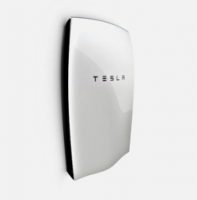
Tesla’s Powerwall announcement – the benefits and limitations for…
Although widely expected for several months, Tesla’s launch of the PowerWall, a lithium ion battery based home energy storage system, has generated a huge amount of publicity and discussion in the media and in the power industry. Tesla’s CEO, Elon Musk, presented the PowerWall as a key component for enabling greater use of locally generated solar power, allowing homes to go off-grid, as well as a solution to electrify regions in emerging markets with no or limited grid access. These are exciting applications will far-reaching impacts on the power sector and potential benefits for consumers.
These benefits of energy storage are well known and it is clear that cost-effective energy storage is a necessary enabler for higher adoption of intermittent renewable energy. Indeed, Tesla’s PowerWall is not fundamentally new technology but rather has focused on ease-of-use, design and of course cost-reduction. The PowerWall will undoubtedly be popular with early adopters, but its sleek and user-friendly design may be less relevant for the electrification of remote regions and under-supplied emerging markets.
Indeed, for much of the broader market, the primary barrier to growth in localized energy storage is the underlying economics and cost of energy storage as well as how to finance these investments. For many consumers and communities, the financing costs and limited access to capital will restrict their ability to invest in home energy storage. These issues may eventually be addressed by home energy installers such as SolarCity, who offer financing options to consumers, but for the time being these barriers remain for the energy storage market. Furthermore, the financing options will need to be tailored to meet the needs of different countries and consumer types.
On the positive side, Tesla’s entry into the home energy storage market will create benefits for the renewable microgrid sector. Firstly, this announcement signifies a transition for home energy storage from a niche technology into the mass market – a critical step for large-scale adoption and market growth. Tesla is generating tremendous interest and press coverage that will translate into sales momentum for the industry. This market momentum is necessary for further cost reduction and technology evolution that will create a virtuous cycle of lower costs and more users.
Another benefit is in regards to pricing, where Tesla has announced a transparent and aggressive price point. The transparency of the pricing is important as it creates a clear benchmark for other manufacturers (and other energy storage technologies). In addition, the transparent price point helps inform consumers and ensure that they obtain value from installers and resellers. The 3500 USD for 10 kWh price point announced by Tesla is at least 10-30% lower than current pricing of most comparable offerings which will push other manufacturers to be more competitive. Tesla’s pricing reflects the scale benefits it expects from the Gigafactory and its focus on growing the market at the expense of short-term profits – all of which is good for the market.
Overall, the launch of the PowerWall will benefit localized renewable power and renewable microgrids by raising consumer interest, generating initial momentum in the market, and increasing competition on pricing. It does not, however, solve key issues around the underlying business case for localized renewables and energy storage nor how to finance the required investments needed for wide-scale deployment. These are critical problems for renewable microgrids that Tesla is leaving open for other companies and entrepreneurs to solve.